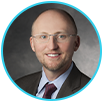This session highlights:
Speakers:

Dr. Gaelyn Garrett serves as senior executive medical director for the Vanderbilt Voice Center and is actively involved as a board/ committee member for a number of organizations, including the American Laryngological Association, Vanderbilt University Medical Center, the Nashville Academy of Otolaryngology, and the American Board of Otolaryngology. She was recently inducted as the first female president of the American Laryngological, Rhinological and Otological Society (also known as the Triological Society. Dr. Garrett is the vice chair for clinical operations in Vanderbilt University Medical Center’s Department of Otolaryngology and Guy M. Maness Chair in Laryngology and Voice. She graduated from University of North Carolina at Chapel Hill School of Medicine, where she also completed her otolaryngology residency. A Fellow of Vanderbilt University Medical Center and Board Certified in Otolaryngology, Dr. Dr. Garrett is currently affiliated with Vanderbilt University Medical Center, Veteran’s Administration Medical Center, and St. Thomas Hospital, all of which are located in the Nashville area.

Dr. Chris Holsinger is Professor and Chief of Head and Neck Surgery at Stanford University Medical Center, where he also leads the multidisciplinary Head and Neck Oncology Program at the Stanford Cancer Center. From 2003-2013, Dr. Holsinger worked at the Department of Head and Neck Surgery at the University of Texas M.D. Anderson Cancer Center where he founded and led the Program in Minimally Invasive and Endoscopic Head and Neck Surgery and co-directed the program in Minimally Invasive Technology in Oncologic Surgery.
Dr. Holsinger’s surgical practice focuses on the surgical management of benign and malignant diseases of the thyroid, as well as head and neck cancers. His areas of research interest include endoscopic head and neck surgery, including robotic thyroidectomy, transoral robotic surgery and transoral laser microsurgery, as well as time-honoured approaches of conservation laryngeal surgery, supracricoid partial laryngectomy.
Dr. Holsinger's research focuses on surgical innovation, clinical trials, and genomics. He serves as surgical PI for RTOG920 and coordinates surgeon-credentialing prospective clinical trails, through NCI-funded cooperative groups.

Dr. Scott Magnuson is a board-certified otolaryngologist - head and neck surgeon at “Otolaryngology and Head & Neck Surgery” in Celebration. He possesses advanced training in robotic-assisted surgery and is a leading authority on Trans Oral Robotic Surgery (TORS) who specializes in helping patients with cancers of the head and neck. His areas of expertise include advanced head and neck surgery, tumor removal, skin cancer surgery, sleep apnea surgery, airway surgery, thyroid and parathyroid surgery, reconstructive surgery and voice and swallowing disorders. Dr. Magnuson is an award-winning surgeon whose credentials include his medical degree earned at the University of Texas Medical School in Houston as well as his internship in general surgery and otolaryngology residency at the University of Alabama at Birmingham.
Results and patient experience may vary. Please see the instructions for Use (IFU) for product safety information, including intended use, contraindications, and risks.